“It isn’t personal. It’s just business.”
Those phrases are too often used in the commercial world, but they just don’t apply when talking about most family-run enterprises.
The business of running these companies is deeply personal.
The priorities of family businesses “go well beyond financial concerns,” says Barry DuVal, president and CEO of the Virginia Chamber of Commerce.
While public companies are forced to focus on maximizing shareholder value in the short term, the bottom line for family businesses is, well, not always the bottom line, DuVal explains. Family businesses worry almost as much about their reputations, their longevity and their legacies. And, unlike some corporate entities, many feel a heavy responsibility toward their employees. It’s not by chance that most principals of family businesses interviewed for this story refer to their workers as “their people.”
Like all businesses, family businesses have been walloped by COVID-19. Con-sumer spending in the commonwealth was down 32.3% in April, and, as of Aug. 9, was still down by 6.3%, according to the economic tracker provided by Opportunity Insights, a nonprofit based at Harvard University. In the commonwealth, unemployment bottomed out at 11.2% in the spring, but as of July that figure stood at 8%.
“Compared to every post-World War II recession, this is the worst,” says Robert M. McNab, an economics professor at Old Dominion University. Businesses requiring frequent interaction with customers in indoor spaces, such as gyms and hospitality and entertainment venues, have suffered disproportionately, he says, and some in the Hampton Roads area, where he is based, closed permanently after the summer brought a spike in virus cases and renewed lockdowns.
Smaller family-run enterprises in all sectors tend to be especially vulnerable to severe downturns, McNab says. They usually have thinner profit margins, less access to capital and a more limited ability to absorb financial shock.
And, to a great extent, he says, they must “live and die on the customers they have.” The “survivors,” he says, “have very loyal customer bases, who say, ‘We’re going to stick with you. You’re part of the community.’” Big corporations typically don’t build that same type of loyalty, he adds.
Betsey Fortlouis is the director of development and partnerships at InnerWill, a Manakin-Sabot-based nonprofit that specializes in leadership training. Founded by Charlie Luck IV, president and CEO of the family-owned Luck Cos., InnerWill works with about 50 family-run businesses nationwide, and, though none of them have gone out of business due to the coronavirus pandemic, Fortlouis says many “feel great uncertainty and fear.”
She has found that first- and second-generation family businesses are at the highest risk of failure, but “clients who have been around for 50-plus years seem to have cracked the code for resilience. Culture trumps everything else in terms of a business that thrives.”
Survival can come at a high cost, however, as the additional stress of crises like COVID-19 can create deep fissures in familial relationships. DuVal, who owned a family business in Newport News in the ’90s, can attest to that. He vividly remembers how difficult it was when a recession early in that decade forced him to reduce his brother’s salary, affecting not just his brother, but also his brother’s children.
On the plus side, DuVal notes, family businesses that come out on the other side of such a crisis often find “a renewed sense of mission and purpose.”
Here is a snapshot of seven family businesses in Virginia that have been weathering the storm of COVID-19. None have closed but all have made adjustments to the harsh realities of 2020.
“The advantage of a family business is that they’re already there. The disadvantage of a family business is that they are already there.”
Charles Carter, 11th generation, Shirley Plantation
Charles City
Dating to 1613, Shirley Plantation is the nation’s oldest family-run business. The Hill branch of Charles H. Carter III’s family arrived there in 1638, making him the 11th generation to live at the site along the James River in Charles City. “We just never moved,” Carter says. “The stubborn gene was turned on.”
Carter is president of the nonprofit Shirley Plantation Foundation, which operates the 1738 “Great House” and 11 surrounding acres as a historic site. With no government support, the foundation relies on membership dues and admissions to survive, and revenues are way down because of the pandemic.
Carter’s position has always been unpaid, but his wife, Lauren, the organization’s treasurer, drew a salary until the coronavirus struck. All but two of the 15 people the plantation normally employs, mostly as guides, have been laid off.
Until recently, plantation tours were confined to the grounds, though limited house tours have resumed. The problem has been, “How do you clean 330-year-old surfaces?” Carter says. Dealing with that along with the relentless upkeep demanded by such an old house falls squarely on him. “If I have to go in that basement and pump it out one more time, my head will explode,” he says.
After the nationwide racial justice protests that began in May, the plantation issued a statement in support of Black Lives Matter and recognizing Shirley Plantation’s role in slavery. The Carters have expanded information about enslaved people in their tours, showcasing the African American craftsmanship in the plantation’s buildings.
Carter also runs Weanack Land LLC on the other 700 or so acres of the plantation, where he has tried several ventures with mixed results. A shrimp farm failed but a land reclamation initiative, filling abandoned sand and gravel pits on the property with materials from dredging projects, has been successful.
He is growing pecans now, too, though it’s a slow go because the first harvest takes seven or eight years. “It’s like breeding elephants,” he says wryly.
But being a family business offers the luxury of the long term. “You have more opportunities to try things,” he says.
Carter also enjoys working with his family, although with caveats. “If you get along well, it can be great. You don’t have to ask a lot of questions. But the rough patches are harder, and you’re always on call.”
Still, Carter fully expects his 4-year-old twins will get involved in the business when they are old enough. “My kids will be tour guides one day, just like I was.”
“First time being in the middle of nowhere has been an advantage.”
Den Crallé III, third generation, Green Front Furniture

Farmville
A dominant presence in downtown Farmville, Green Front Furniture occupies about 1 million square feet across four old tobacco warehouses and six storefronts. That vast capacity in a somewhat isolated locale has made customers feel relatively safe shopping at Green Front, and the company has been experiencing “unprecedented business,” says its president, Richard “Den” Crallé III.
Crallé is the third Richard to run the 50-year-old furniture business, which began as a sideline operation behind the family grocery store — thus the “green front” name — and now has locations in Manassas and Raleigh, North Carolina.
“I started off working summers, running up and down rug piles,” Crallé says, but since taking over from his father, Richard Jr.,
two years ago, he has been focusing on modernizing the business — updating facilities and signage, rebranding and
creating a social media presence.
Crallé also has the company “dipping a toe into e-commerce.” In addition to its website, Green Front now has a second site exclusively devoted to rugs to capitalize on Richard Jr.’s buying trips to India and Pakistan. “We are honing in on what we do best,” his son says.
Green Front shut down for a month because of COVID-19, but it didn’t lay off any of its 100 or so employees. “Everyone is part of the family,” Crallé says. A loan through the federal Paycheck Protection Program “obviously helped” the company through the early days of the virus, he adds.
Taking over from his father has required some tough calls and “harder conversations,” Crallé says, yet the level of trust and security in the family culture “bleeds over to everyone. I was lucky enough to get on the train when it was already moving,” he says. As he sees it, his job now is to keep the company squarely on track to an even more prosperous future.
“We don’t have to put the bottom line first, and that’s powerful.”
Arlene Lee, fourth generation, R.E. Lee Cos.

Charlottesville
Arlene Lee is the fourth generation of her family to run R.E. Lee Cos., a construction firm that started in 1939 as a father-son team of restorers of fine and historic houses. “The fifth generation will be joining us soon,” she says.
R.E. Lee has evolved from its beginnings into what its CEO and principal calls the full cycle of building, now focusing mostly on commercial projects. “Construction is notoriously slow to change, but we can’t be slow to change,” she says.
Thrust into a leadership role after her husband’s death in 2015, she has made it a point to keep the company flexible and open to innovation. In the past five years, for instance, the company, which has about 150 employees, has completely overhauled its technology. “Being family-run, you can pivot quickly,” Lee says. “That gives you resilience.”
Company culture is also a huge plus for both R.E. Lee employees and clients.
“We have a tremendous responsibility to our employees, to their livelihoods, to treat them with compassion and empathy,” Lee says, noting that some of her workers are multigenerational, too. “People choose that culture over what big corporations can offer,” she says. “Family businesses tend to be more local or regional, and the people we do business with are us. We are building community in the community where we live.”
COVID-19, Lee says, “has been triggering a lot of anxiety and extra stress,” as it has for many companies, but the crisis also brings opportunities. “Six months ago, we had a workforce shortage. Now incredible talent is available for companies willing to think outside the box. It is not all doom and gloom.”
“We’re very, very fortunate to be considered essential.”
Bob Archer, second generation, Blue Ridge Beverage Co.

Salem
“We lost at least 18% of our business overnight,” says Blue Ridge Beverage Co. Chairman and CEO Robert A. “Bob” Archer. The double-digit decline was caused by this spring’s statewide lockdown when restaurants and bars were shuttered to curb the spread of COVID-19. When that window closed, however, another opened for the beverage distributor. Demand for its potables surged at “off-premise” outlets such as grocery and convenience stores, making up for the sudden losses, Archer says.
In 1959, Archer’s father and mother, James M. and Regine Archer, bought Blue Ridge Beverage, which had distributed beer in the region since 1938. His father died in 1972, but at age 95, his mother “is still on board,” Archer says.
The business started out with just 10 employees, but as Archer added wine and other products to its distribution portfolio, the company gradually grew. Today, it has 469 employees, and Archer has not had to lay off even one of them because of the pandemic. Instead, he has shuffled people from the languishing sector of the business to the part that is flourishing.
It hasn’t been easy, though. “Our people are at risk,” Archer says, noting that they make deliveries in 49 counties, and the effort to keep employees safe has required time and money.
Being family-run has made pivoting to meet the COVID-19 crisis easier in some ways, however. “We can make decisions not strictly on the bottom line,” he says. “We have more freedom and more flexibility” than non-family-owned businesses.
Family is central at Blue Ridge Beverage. Archer’s five brothers and sisters have been involved in the company at various times, and some members of the next generation already work for the company part time and during the summer. Archer convenes a family council thrice yearly to discuss the business, and once a year, the whole family meets, though attendance was limited this year due to the pandemic.
Archer worries a bit about succession planning. “You have to have the right skill set and the right family members,” he explains, but, overall, he is staying positive.
“As a business,” he says, “we’ve been blessed.”
“It’s a struggle, but we made it through the Great Depression, and we continue on.”
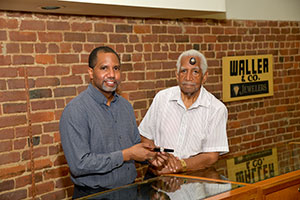
David Waller, fourth generation,Waller & Co. Jewelers
Richmond
When rioting broke out in May during Black Lives Matter protests in Richmond, 120-year-old Waller & Co. Jewelers, one of the city’s oldest Black-owned businesses, saw its windows broken and its showcases looted of watches and jewelry. Yet owner David Waller, the fourth generation to run the business, focused not on the destruction, but the goodwill that followed.
“A ton of outpouring came from the community,” he says. “A lot of people came to help clean up and buy items.”
Many of those people were members of Black fraternities and sororities. For generations, Waller & Co. has been the go-to place for their Hellenic-themed needs, including rings, necklaces and pendants. Close to 100 Greeks appeared the morning after the break-in to help with cleanup. They also went shopping. “It turned out it was a blessing,” Waller says. He told Fox News that the criminality of that one night was “just a small blip in that whole narrative.”
Waller & Co.’s narrative starts with his great-grandfather’s talent for repairing clocks, watches and jewelry. Shopping at Wallers became a tradition for some local Black families. “You are able to know who the owners are. You get the personal touch,” Waller says. “You get to know the customers, generations of customers.”
“We talked salary cuts early in this thing, and all my executives said, ‘You can cut my salary, but not my employees.’ So, we didn’t cut anybody’s — except mine.”
Bill Dean, third generation, M.C. Dean Inc.

Tysons
In 1949, Bill Dean’s grandfather, Marion Caleb Dean, started an electrical firm that, under the leadership of his son, Marion Casey Dean, grew into a $44 million national business. In 1997, his son, Bill Dean, became CEO, inheriting leadership of a company that had “150 good employees with good DNA and a great work ethic.”
In the 20-plus years since then, the third-generation Dean has turned the Tysons-based firm into one of the biggest electrical contractors in the country. Early on, Dean added a focus on systems engineering, and when that sector “blew up in the ’90s,” the company began “spiraling into technology,” he says. M.C. Dean is now a multinational, billion-dollar business providing a range of electrical, cyber and physical services for clients such as the U.S. Department of Defense and Washington Dulles International Airport.
Dean’s brother, Eric, is the company’s chief technology officer for the security and electronic systems division, and two other family members hold non-leadership positions in the business. Another two are interns. “It’s awesome. I love working with my family,” Dean says, though he admits that characterizing M.C. Dean as a family business might be a bit of a stretch these days. “Of the 3,700 employees we have, 3,695 aren’t family,” he says. “Still, we want that kind of culture. A caring culture is the biggest responsibility of leadership.”
COVID-19 has made that responsibility all that much heavier. To keep the payroll flowing, Dean has redefined jobs. The company’s operations in Orlando, for example, “were crushed” by the virus, he says, which led to major shuffling. Yet only about 50 employees declined to relocate and left the company.
“We’re very lucky to be headquartered in NoVa,” Dean says, describing its economy as strong and resilient. And, although he doesn’t expect a recovery to reach pre-COVID-19 levels anytime soon, he believes opportunities will emerge. “Anyone prudent,” he says, “has to plan multiple scenarios.”
“I got out of business school full of myself with how to do this and that, but I got a dose of reality.”

Ben Davenport Jr., second generation, Davenport Energy Inc.
Gretna
Ben Davenport Jr. is the chairman of Davenport Energy, a company founded by his father in 1941 as Chatham Oil Co. The Gretna-based business currently supplies propane and heating oil to about 30,000 customers in Southwest and Central Virginia as well as in parts of North Carolina.
Davenport went to work for his father in the 1960s.
“My father was a product of the Depression,” he says. When he came to his father early on, armed with ambitious ideas from business school, his father just said, “We don’t borrow money.”
That old-school style of doing business turned out to be a plus for the younger Davenport. When he needed to raise capital quickly to launch First Piedmont Corp., a waste management company he started in 1969, he says, “the good name my father had given me helped me in the banking world.”
Today, Davenport’s companies employ about 350 people. “We have high standards as to the character of our people,” he says. “Our work family is an extension of our family.”
During the pandemic, not having to account to shareholders has allowed both of Davenport’s companies to be nimble in adapting to the unpredictably evolving situation.
“We allowed a lot of our people to work from home — we had never done anything like that before,” he says. The unexpected result of this year’s hard times? “We have actually become closer than before.”
Neither of Davenport’s companies has had any layoffs, and, although some employees may not be working as many hours, they all have kept their benefits.
“Profitability is down some, but we are truly blessed. We’re all hanging in there together,” Davenport says.



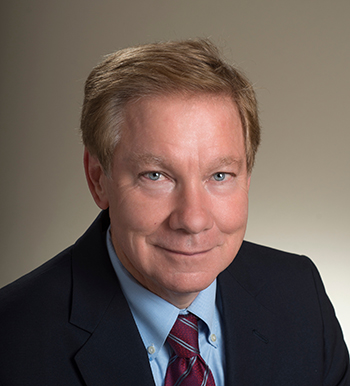



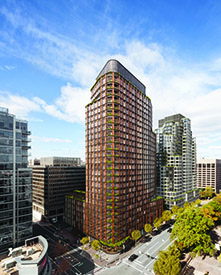
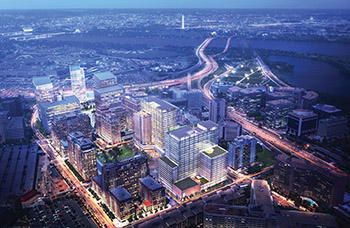

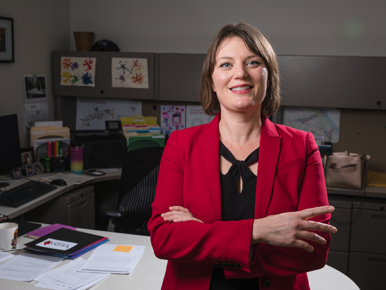

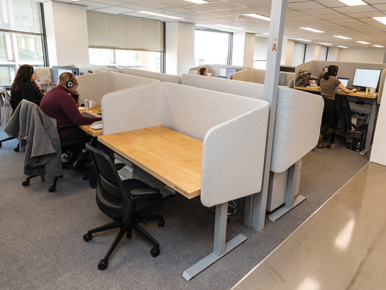
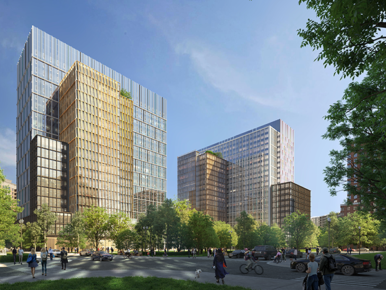
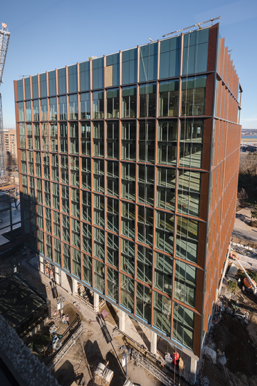
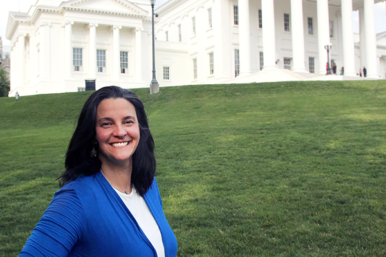

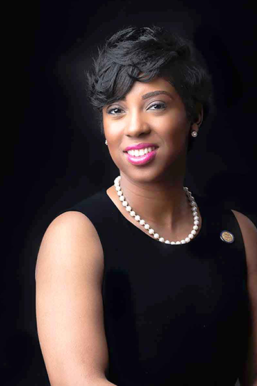
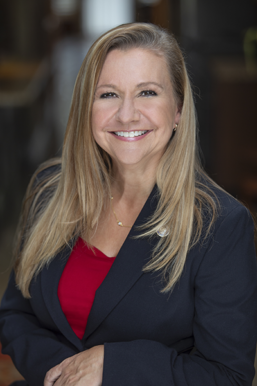
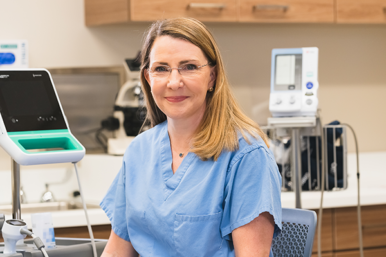
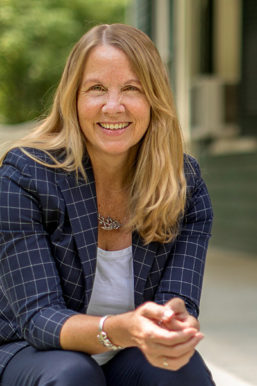
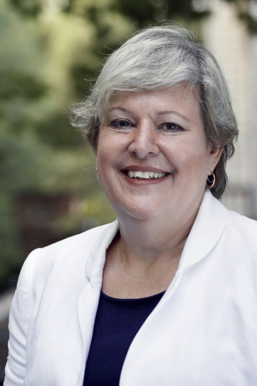

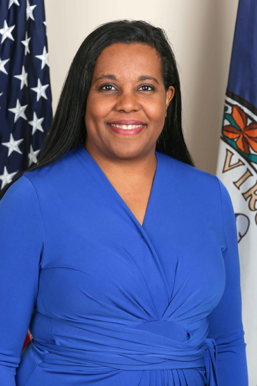
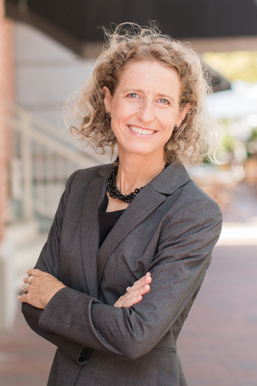
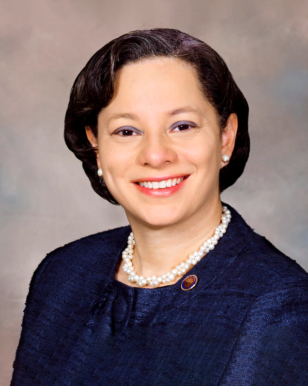
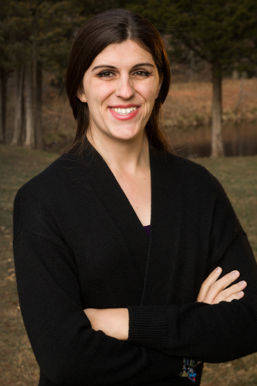
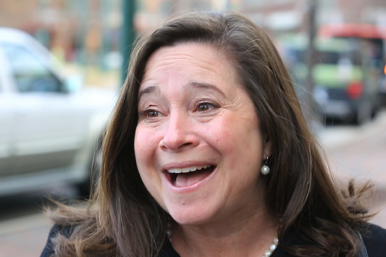
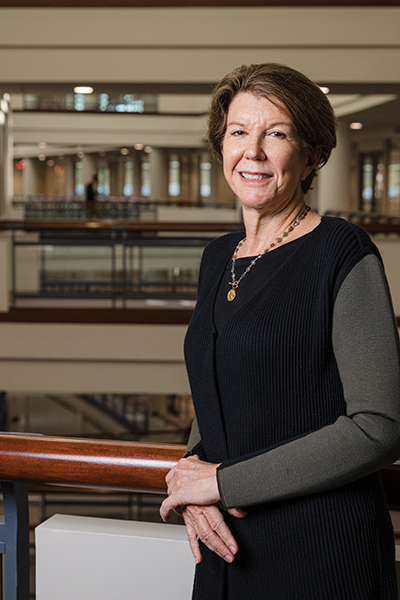 One way the county is accelerating change in its schools is by partnering with other educational institutions, regional entities and the private sector. “It’s always about partnerships,” says Rachel Flynn, deputy county executive.
One way the county is accelerating change in its schools is by partnering with other educational institutions, regional entities and the private sector. “It’s always about partnerships,” says Rachel Flynn, deputy county executive. Matt Calkins, founder and CEO of Appian, recently moved his software company’s 700-person headquarters to Tysons. The attraction was multifold, he says. “Everything you need to build a tech company is right here in Fairfax,” he says, including great education, local capital, savvy business leaders and — unexpectedly for those who picture the Tysons of the past — green space. Plus, Tysons is at the crossroads of excellent transportation options, Calkins says, with easy-on/off to a network of sophisticated multilane highways and good access to Washington Dulles International Airport, which will get even better when the second phase of Metro’s Silver Line opens next year.
Matt Calkins, founder and CEO of Appian, recently moved his software company’s 700-person headquarters to Tysons. The attraction was multifold, he says. “Everything you need to build a tech company is right here in Fairfax,” he says, including great education, local capital, savvy business leaders and — unexpectedly for those who picture the Tysons of the past — green space. Plus, Tysons is at the crossroads of excellent transportation options, Calkins says, with easy-on/off to a network of sophisticated multilane highways and good access to Washington Dulles International Airport, which will get even better when the second phase of Metro’s Silver Line opens next year. One of the latest deliveries at Tysons is The Lumen, a 32-story apartment building advertised as being just steps away from the Silver Line’s Greensboro Metro station. The sleek, amenity-heavy tower is typical of the new Tysons vibe. The building’s 398 units have been filling up rapidly, with an assortment of millennials, married-with-no-children couples and empty nesters attracted by the urban setting, says Rob Mooney, director of business development for The Lumen’s builder, Hoar Construction.
One of the latest deliveries at Tysons is The Lumen, a 32-story apartment building advertised as being just steps away from the Silver Line’s Greensboro Metro station. The sleek, amenity-heavy tower is typical of the new Tysons vibe. The building’s 398 units have been filling up rapidly, with an assortment of millennials, married-with-no-children couples and empty nesters attracted by the urban setting, says Rob Mooney, director of business development for The Lumen’s builder, Hoar Construction. “The street grid came first” at this mix of luxury residences, high-end office space and retail located just a block from the Silver Line’s Greensboro Station, says Robert Sponseller, design principal for Shalom Baranes Associates, which co-designed the complex with the architecture, design and planning firm Gensler. A joint project of two commercial real estate development companies, The Meridian Group and Kettler, The Boro is projected to top out at 4.25 million square feet of development and includes the largest Whole Foods market in the region.
“The street grid came first” at this mix of luxury residences, high-end office space and retail located just a block from the Silver Line’s Greensboro Station, says Robert Sponseller, design principal for Shalom Baranes Associates, which co-designed the complex with the architecture, design and planning firm Gensler. A joint project of two commercial real estate development companies, The Meridian Group and Kettler, The Boro is projected to top out at 4.25 million square feet of development and includes the largest Whole Foods market in the region.